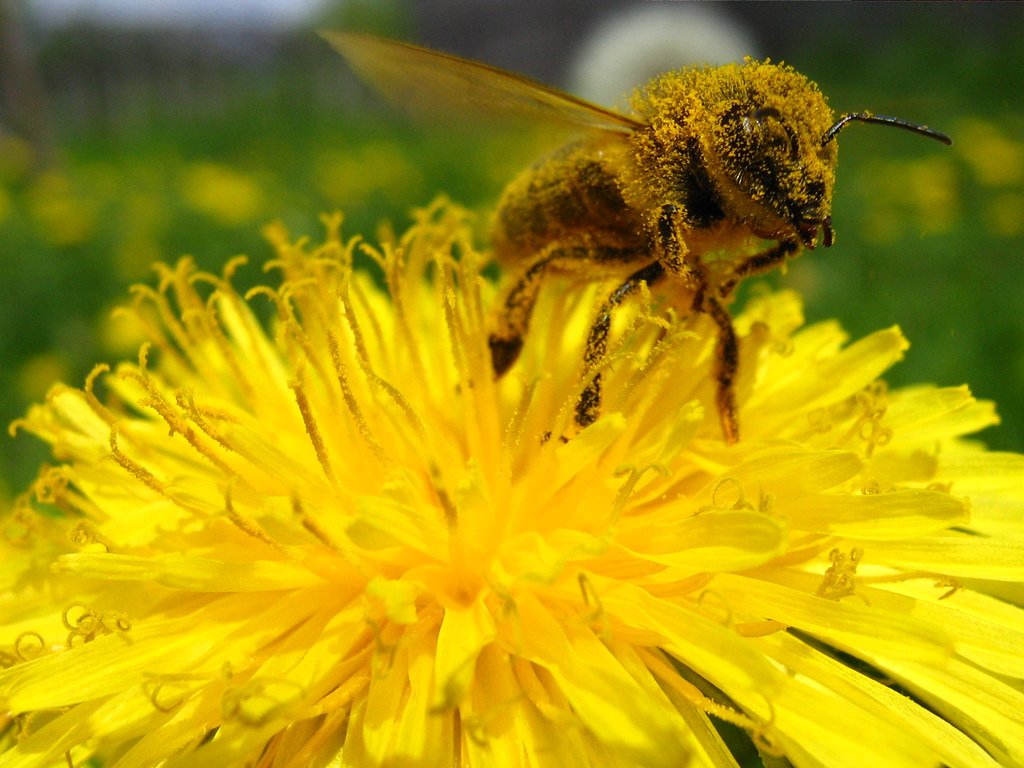
There is a tragedy unfolding across Britain’s fields, gardens and parks. Its victims may be small and easily overlooked but its consequences could affect us all.
We are killing bees.
Not usually deliberately; but we are poisoning them.
In our quest to get rid of weeds and other unwanted plants, to cut down on work and the cost of labour, to increase the yield from crops, to have tidy, colourful gardens with no greenfly on our roses, we use herbicides, insecticides, fungicides… you name it.
And if you have a garden and you like it to look cared-for, but you are reading this and feeling self-righteous because you don’t use ‘herbicides’: well, if you don’t dig out weeds but you reach instead for the weedkiller spray, you are using a herbicide. It’s so much quicker and easier, isn’t it?
Even if you take the time to read the label and choose one that claims it doesn’t harm bees, nearly every weedkiller or pesticide on the market will do some environmental damage unless it is used precisely as instructed – and how many of us take the trouble?
The truth is that many ‘modern’ chemicals don’t kill on contact but systemically, through absorption into every part of the plant, and thence into the body of anything feeding on it. Roots, leaves, pollen and nectar – all end up containing small amounts of compounds which are toxic to insect life. Very small amounts, in all likelihood, but it doesn’t take much to kill a bee.
In the case of bees which collect both pollen and nectar, if what they take back to their nest or to the hive contains toxins, it will affect the bees’ young as well as the adults.
Insects of all kinds, but particularly bees, are in deep trouble worldwide and face many immediate dangers as well as longer-term threats such as climate change. In Europe one in ten species of pollinators are in decline, through loss of suitable habitat, more frequent ‘extreme weather events’, attack by invasive species and diseases, death or disablement from chemicals – neonicotinoids, much in the news recently, including in West Country Voices, have been found to disrupt honeybees’ ability to find their way back to the hive – and colony collapse (a phenomenon not yet well understood: the sudden, apparently-inexplicable disappearance of thousands of honeybees).
The two most familiar kinds of bees in the UK are bumblebees and honeybees. Bumblebees – of which we have 25 species in the UK – live in small colonies, usually in holes in the ground, and they sip nectar and collect pollen, but they don’t make honey. The largest ones we usually see are mature adults, especially females, mated ‘queens’ which have survived winter and emerge in early spring to feed and to find a good nesting place. They can be very large (20-22mm) and one of the commonest species has the well-known ‘furry’ black-and-yellow-banded body and white ‘tail’.
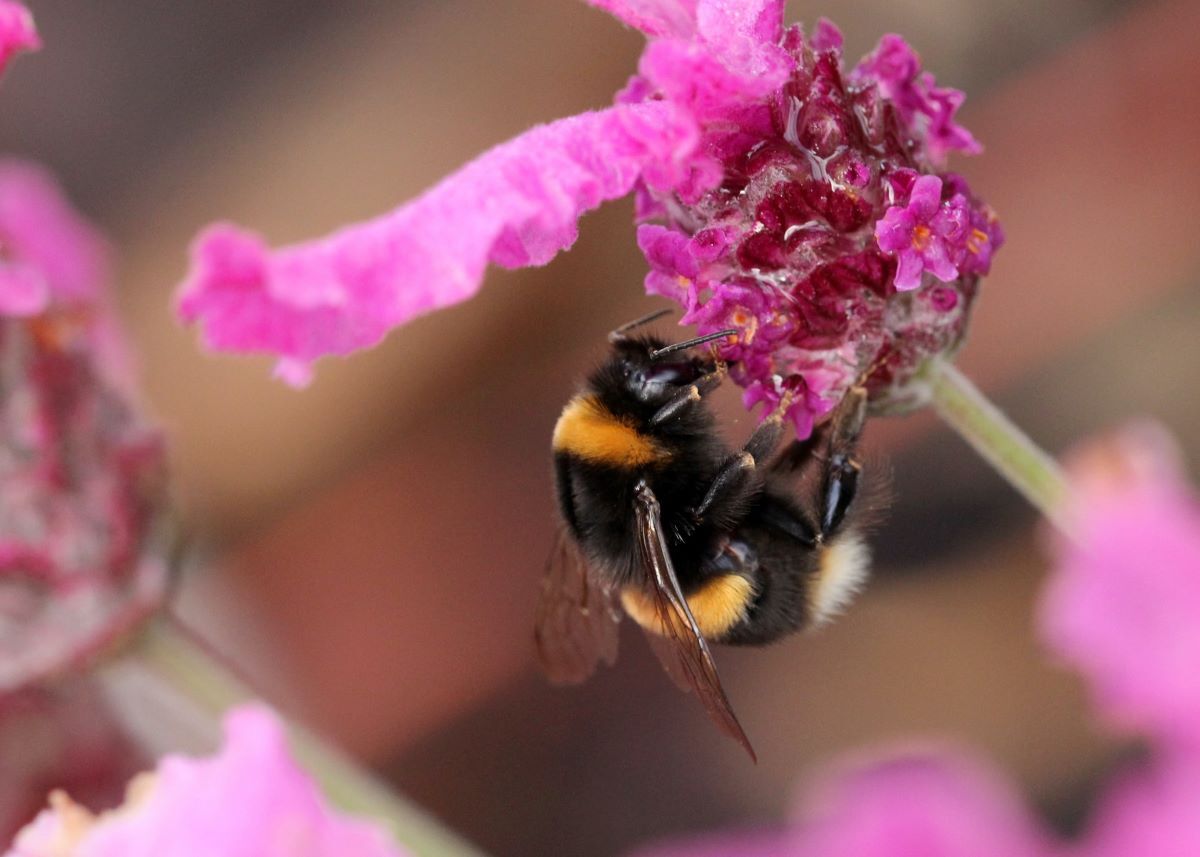
Honeybees are much smaller and have golden-brown or brownish-black bodies; they are usually active little creatures, visiting many flowers in quick succession. They live in colonies of up to 50,000 individuals and they are seldom seen outside the hive between late autumn and early spring. They too collect pollen by means of the bristles on their legs, and they sip nectar – but they return with most of what they find to the hive, where its moisture content is gradually lowered before it is sealed in wax cells – the honeycomb. Both pollen and nectar are used (or at least would be used, without the intervention of the beekeeper) to feed the colony or the young.
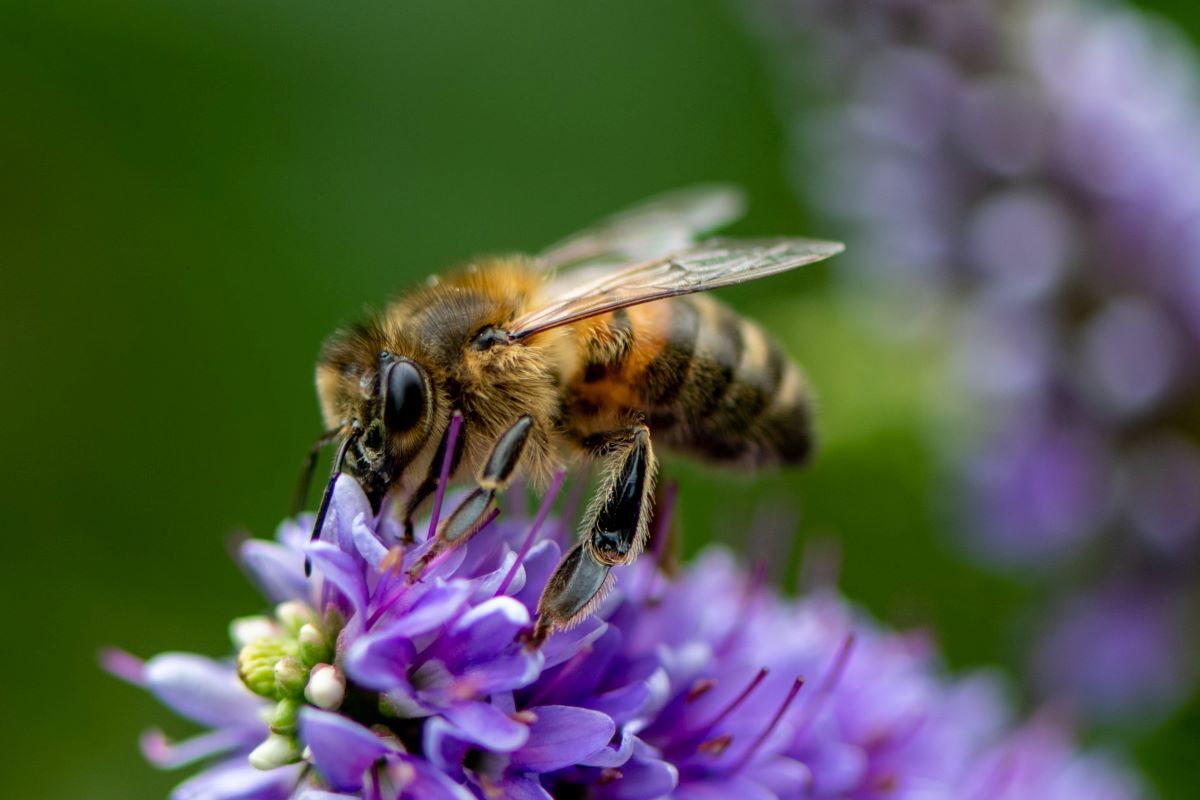
There are many other bee species in the UK – we have nearly 250 species of ‘solitary’ bees – and some have very specific needs in terms of habitat, nesting places and food, but almost without exception their numbers are dropping, and we must try to arrest the decline.
Not just on principle, or because we enjoy eating honey, or even because the decline hastens the loss of biodiversity, but because a very significant proportion of our food is indirectly produced by bees and other ‘beneficial insects’. Owing to the difficulty of ascertaining which insects have pollinated which crops ‘in the field’ – literally – estimates of that proportion range widely but could be up to 30 per cent. What is certain is that 70 per cent of the crop species which provide 90 per cent of the world’s food are pollinated by bees.

Without bees, we would no longer be able to rely on the supply of many vegetables and almost any fruit you can think of. Everything from apples to mangoes, beans to strawberries, tomatoes to cherries, courgettes, avocados, peaches – the list is endless – attract bees to pollinate the flowers which then develop into the fruit. Some plants have evolved to be pollinated by other animals (eg wild bananas, which are pollinated by bats or birds) or by wind to transfer the pollen (eg sweetcorn); and commercially, various mechanical methods of pollination are also used, but insects, mainly bees, are the most important pollinators.
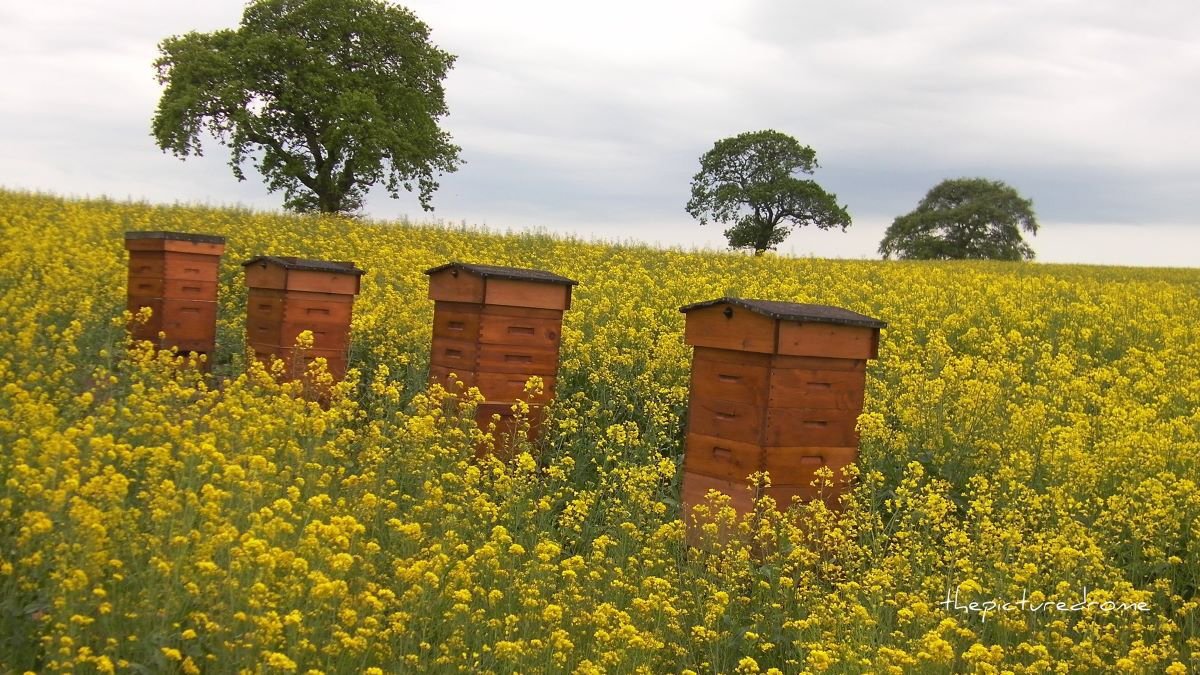
Many beekeepers transport their honeybee hives around seed-crop fields and orchards at flowering time, and many commercial growers of crops such as tomatoes, peppers and strawberries, which are grown on a huge scale under glass, even buy colonies of factory-reared bumble bees which they introduce into their greenhouses to ensure high pollination rates: the weight and buzzing of a bumble bee landing on the flower helps shake the pollen off the anthers.
Such bees are of course bred for the purpose, but wild bees are in such serious decline that we must start trying to protect those we still have, and create a less hostile environment for them. That means providing more safe forage for them: those of us who can, must grow more plants on which they can feed, and we must learn to grow those plants without using chemicals which can adversely affect bees and other insects feeding on them. Farmers and food producers will need encouragement, help and finance to find alternative crops, growing methods or treatments. \
Councils, other landowners and highways authorities must be encouraged to allow areas of ‘waste ground’ and roadside verges to grow without being sprayed, or cut before plants can set seed; perhaps they can even be encouraged to grow more ‘wildlife-friendly’ plants. The loss of flower-rich habitat is now acknowledged to be one of the main causes of decline in bee numbers worldwide: I well remember a roadside verge in Somerset which was a colourful ‘tapestry’ of wild flowers in the summer but which was regularly mown by the council and in the space of five years became ‘useless’ for insects.
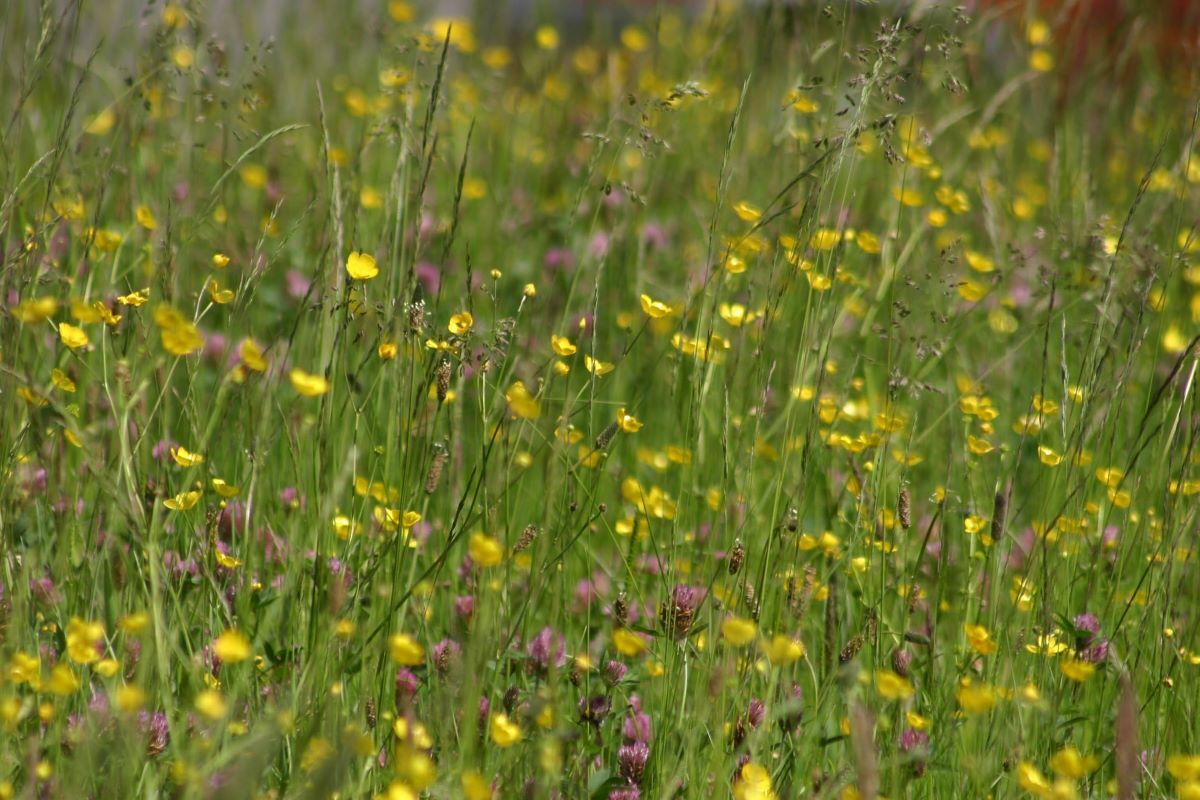
Attitudes are changing, but old habits die hard; tv gardener Monty Don was recently heavily criticised for making the heretical suggestion that we should stop cutting our lawns – it seems that the most desirable lawn is still like a bowling green, with stripes; but daisies, clover, buttercups – plants which many of us try to eliminate from our lawns – will provide valuable forage for bees and many other insects. Let’s encourage councils everywhere to adopt a bee-friendly policy. Write to your council and point them in the direction of the Wildlife Trust’s information on managing road verges. You can also sign Plantlife’s petition and add a link to their site to your email to the council.
Spread the word! Stop spraying the dandelions and start feeding the bees!




